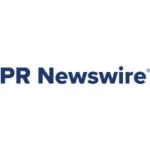NEW YORK, Nov. 6, 2024 -- Report with market evolution powered by AI - The global glass fiber reinforced plastic (GFRP) market size is estimated to grow by USD 5.79 billion from 2024-2028, according to Technavio. The market is estimated to grow at a CAGR of 3.3% during the forecast period. Increased use of glass fiber reinforced plastic (GFRP) in construction industry is driving market growth, with a trend towards development of bio-based transparent plastics. However, availability of substitutes poses a challenge.Key market players include AGY Holding Corp., BGF Industries, Celanese Corp., China Beihai Fiberglass Co. Ltd., China Jushi Co. Ltd., Compagnie Chomarat, Compagnie de Saint-Gobain S.A., Evonik Industries AG, Johns Manville Corp, Nippon Electric Glass Co. Ltd., Nitto Boseki Co. Ltd., Owens Corning, PPG Industries Inc., SAERTEX GmbH and Co.KG, Sichuan Weibo New Material Group Co. Ltd., Sinoma Science and Technology Co. Ltd., Taiwan Glass Ind. Corp., Yoshino Gypsum Co. Ltd., and Yunnan Phosphate Haikou Co. Ltd..
Key insights into market evolution with AI-powered analysis. Explore trends, segmentation, and growth drivers- View Free Sample PDF
Glass Fiber Reinforced Plastic (GFRP) Market Scope | |
Report Coverage | Details |
Base year | 2023 |
Historic period | 2018 - 2022 |
Forecast period | 2024-2028 |
Growth momentum & CAGR | Accelerate at a CAGR of 3.3% |
Market growth 2024-2028 | USD 5787.1 million |
Market structure | Fragmented |
YoY growth 2022-2023 (%) | 3.2 |
Regional analysis | APAC, Europe, North America, South America, and Middle East and Africa |
Performing market contribution | Europe at 33% |
Key countries | US, China, Canada, Japan, and Germany |
Key companies profiled | AGY Holding Corp., BGF Industries, Celanese Corp., China Beihai Fiberglass Co. Ltd., China Jushi Co. Ltd., Compagnie Chomarat, Compagnie de Saint-Gobain S.A., Evonik Industries AG, Johns Manville Corp, Nippon Electric Glass Co. Ltd., Nitto Boseki Co. Ltd., Owens Corning, PPG Industries Inc., SAERTEX GmbH and Co.KG, Sichuan Weibo New Material Group Co. Ltd., Sinoma Science and Technology Co. Ltd., Taiwan Glass Ind. Corp., Yoshino Gypsum Co. Ltd., and Yunnan Phosphate Haikou Co. Ltd. |
Market Driver
The market for Glass Fiber Reinforced Plastics (GFRP) is witnessing significant growth, particularly in the biodegradable plastics segment. Bioplastics, made from renewable resources, are gaining popularity due to increasing environmental concerns. However, high production costs and inferior physical properties limit their widespread use. The production of bulk resins from bio-based sources is a promising development. The demand for biodegradable GFRP in various industries, especially food and beverage packaging, is on the rise. Clear, biodegradable plastics that can be disposed of directly are expected to drive future market growth. However, the longer biodegradation duration of bioplastics may hinder market expansion. Innovative materials like alae-based bio-plastics present new opportunities, potentially accelerating market growth during the forecast period.
The Glass Fiber Reinforced Plastic (GFRP) market is experiencing significant growth due to its use as a reinforcing material in various industries. In construction, GFRP is replacing traditional rebar for its corrosion-resistance and lighter weight, reducing transportation costs and manual handling injuries. In transportation, GFRP is being used to manufacture lightweight vehicles, including electric cars and advanced SUVs, for improved fuel efficiency and emissions. In renewable energy, GFRP is utilized in rotor blade technology for wind energy capacity expansion. Molding technologies, such as compression molding process, enable the production of lightweight panels, rolls, and sheets for use in architectural coatings and construction activities. GFRP's durability and resistance to hazardous chemicals make it ideal for use in chemical plants and piping activities. Additionally, the recycling process of GFRP is gaining attention due to its potential in reducing waste and environmental impact. Overall, the GFRP market is trending in lightweight materials, renewable energy, and durable materials for various applications in transportation, construction, and industrial sectors.
Request Sample of our comprehensive report now to stay ahead in the AI-driven market evolution!
Market Challenges
- The global glass fiber reinforced plastic (GFRP) market faces challenges from substitutes like carbon fiber, basalt fiber, and natural fiber. These alternatives are utilized in various sectors such as buildings and construction, automotive, wind turbines, consumer goods, and industries. Compared to glass fiber, carbon fiber is lighter and offers higher tensile strength, stiffness, and density, making it a preferred choice for numerous applications. Carbon fiber composites are extensively used in construction, industrial automation, robotics, marine and aircraft interiors, electronics enclosures, and automotive applications. Basalt fiber, derived from volcanic rocks, boasts excellent thermal stability, high-temperature filtration, high acid and UV resistivity, and high-energy electromagnetic radiation resistance. It is increasingly replacing metals due to its anti-corrosive and insulating properties in the construction and automotive industry. Natural fiber composites, with their low density, high specific strength, and excellent stiffness, also have a high Young's modulus, low toxic content, and resistance to damages caused by abrasion. They serve as viable alternatives to glass fibers in various industries. The escalating demand for carbon, basalt, and natural fibers poses a threat to the GFRP market. However, the high cost of carbon fiber relative to glass fiber may encourage consumers to opt for GFRP, mitigating the impact of substitutes on the market.
- The Glass Fiber Reinforced Plastic (GFRP) market is experiencing significant growth due to the increasing demand for lightweight devices in various industries. This includes electric cars, advanced SUVs, and transportation in general, where reducing weight leads to lower fuel consumption and emissions. In construction, GFRP's corrosion-resistance and durability make it an ideal reinforcing material for residential constructions, affordable housing, and infrastructure projects. For vehicle manufacturing, GFRP's lightweight properties help reduce transportation costs and manual handling injuries. In wind energy, GFRP composite pipes and tanks offer increased wind capacity and durability. With resin types like Polyester, Vinyl Ester, Epoxy, Polyurethane, and Thermoplastic, GFRP caters to diverse industries such as electrical and electronics, pipes and tanks, building and construction, marine, and more. Manufacturing processes like layup, filament winding, and pultrusion enable the production of high-quality, cost-effective GFRP products.
Discover how AI is revolutionizing market trends- Get your access now!
Segment Overview
This glass fiber reinforced plastic (gfrp) market report extensively covers market segmentation by
- Application
- 1.1 Construction
- 1.2 Transportation
- 1.3 Electrical and electronics
- 1.4 Sports and leisure goods
- 1.5 Others
- Geography
- 2.1 APAC
- 2.2 Europe
- 2.3 North America
- 2.4 South America
- 2.5 Middle East and Africa
1.1 Construction- Glass fiber reinforced plastic (GFRP) is a popular material in the construction industry for various applications including mesh fabrics, drywall tapes, wall coverings, and roof panels. Its waterproof property makes it ideal for exterior covering, safeguarding buildings from water damage and enhancing structural strength. Moreover, GFRP offers an appealing aesthetic look and improves wall strength. Its insulation properties keep buildings warm, reducing energy consumption and costs. The advantages of GFRP are driving its demand in the construction sector, with its use expected to expand during the forecast period.
Download a Sample of our comprehensive report today to discover how AI-driven innovations are reshaping competitive dynamics
Research Analysis
Glass Fiber Reinforced Plastic (GFRP) is a composite material made of glass fibers reinforced in a polymer matrix. The resin types used in GFRP production include Polyester, Vinyl Ester, Epoxy, Polyurethane, Thermoplastic, and others. GFRP finds extensive applications in various industries such as Wind Energy, Electrical and Electronics, Transportation, Pipes and Tanks, Construction and Infrastructure, Marine, Aerospace and Defense, Automobile Sector, Renewable Energy, Automation Sector, Lightweight Vehicles, and Molding Technologies. GFRP's unique properties like lightweight, high strength, and corrosion resistance make it an ideal choice for numerous applications. In the Wind Energy sector, GFRP is used for manufacturing rotor blades due to its high strength-to-weight ratio and resistance to extreme weather conditions. In the Transportation sector, it is used in piping activities for transporting hazardous chemicals, reducing transportation costs and minimizing manual handling injuries in vehicle manufacturing. The GFRP market is witnessing significant growth in the Renewable Energy sector due to the increasing demand for lightweight and durable materials for wind turbines and solar panels. In the Marine Industry, GFRP is used extensively for building lightweight and durable boats and ships. In the Automobile Sector, it is used for manufacturing lightweight vehicles, reducing fuel consumption and improving vehicle performance. Molding Technologies like Compression Molding, Injection Molding, and Pultrusion are widely used for manufacturing GFRP parts. The Recycling Process of GFRP is an ongoing research topic to reduce the environmental impact of this material. Despite its numerous benefits, the high production cost of GFRP remains a challenge for its widespread adoption in certain industries.
Market Research Overview
Glass Fiber Reinforced Plastic (GFRP) is a high-performance composite material made by reinforcing plastic resins with fine glass fibers. The resin types used in GFRP production include Polyester, Vinyl Ester, Epoxy, Polyurethane, Thermoplastic, and others. GFRP finds extensive applications in various industries such as Wind Energy, Electrical and Electronics, Transportation, Pipes and Tanks, Construction and Infrastructure, Marine, and Renewable Energy. Manufacturing processes for GFRP include Layup, Filament Winding, Pultrusion, and various Molding Technologies like Compression Molding Process. GFRP is known for its lightweight properties, making it an ideal choice for Lightweight Vehicles, Electric Cars, and Advanced SUVs. It also offers excellent corrosion-resistance, making it suitable for use in Chemical Plants and other hazardous environments. GFRP is used in the production of Rotor Blade Technology in Wind Energy, providing increased fuel efficiency and reducing emissions. In Construction and Infrastructure, it is used for building durable and lightweight structures, reducing transportation costs and manual handling injuries. GFRP is also used in Architectural Coatings, providing a durable and attractive finish. The use of GFRP in Renewable Energy, particularly in the form of Composite Pipes, is increasing due to its lightweight and durable properties. The recycling process for GFRP is also gaining importance due to the increasing focus on sustainability. However, the use of hazardous chemicals in the production of GFRP is a concern and efforts are being made to explore the use of Bio feedstocks as reinforcing materials.
Table of Contents:
1 Executive Summary
2 Market Landscape
3 Market Sizing
4 Historic Market Size
5 Five Forces Analysis
6 Market Segmentation
- Application
- Construction
- Transportation
- Electrical And Electronics
- Sports And Leisure Goods
- Others
- Geography
- APAC
- Europe
- North America
- South America
- Middle East And Africa
7 Customer Landscape
8 Geographic Landscape
9 Drivers, Challenges, and Trends
10 Company Landscape
11 Company Analysis
12 Appendix
About Technavio
Technavio is a leading global technology research and advisory company. Their research and analysis focuses on emerging market trends and provides actionable insights to help businesses identify market opportunities and develop effective strategies to optimize their market positions.
With over 500 specialized analysts, Technavio's report library consists of more than 17,000 reports and counting, covering 800 technologies, spanning across 50 countries. Their client base consists of enterprises of all sizes, including more than 100 Fortune 500 companies. This growing client base relies on Technavio's comprehensive coverage, extensive research, and actionable market insights to identify opportunities in existing and potential markets and assess their competitive positions within changing market scenarios.
Contacts
Technavio Research
Jesse Maida
Media & Marketing Executive
US: +1 844 364 1100
UK: +44 203 893 3200
Email: media@technavio.com
Website: www.technavio.com/
This News is brought to you by Qube Mark, your trusted source for the latest updates and insights in marketing technology. Stay tuned for more groundbreaking innovations in the world of technology.









